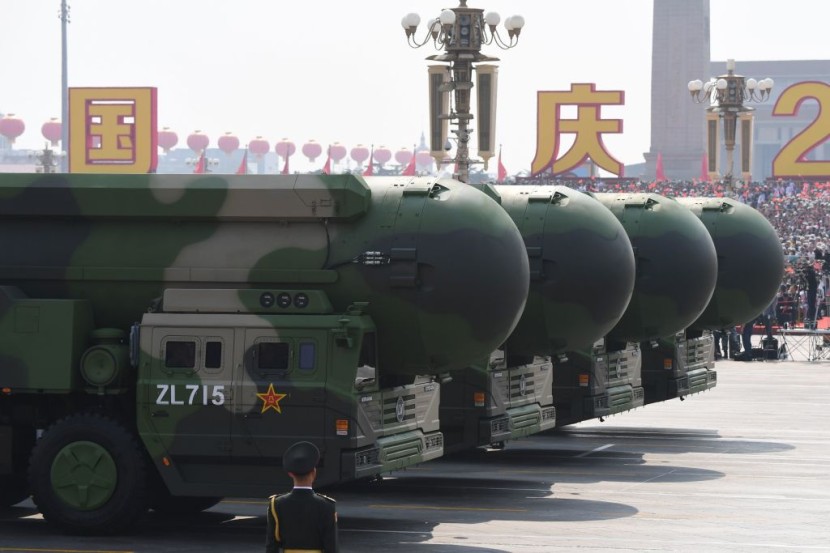
China's military has taken increasingly unsafe actions against US forces in the Asia-Pacific region, including maneuvers to intimidate American aircraft and enhance its nuclear capabilities, according to a report released by the Pentagon on Thursday.
Based on the Defense Department's annual report to Congress on China's military capabilities, the United States has experienced a significant increase in "coercive and risky" air intercepts by the Chinese military over the past two years, surpassing the number recorded in the previous decade, as per The New York Times.
Pentagon Raises Alarms on China's Nuclear Arsenal Growth
Conforming to a recent assessment by the US Department of Defense, China has experienced a notable rise in its operational nuclear warhead count. The number has surged from an estimated 400 in 2021 to over 500 in May.
While this number remains a fraction of the atomic stockpiles held by the United States and Russia, it marks a concerning shift in China's nuclear capabilities. The Pentagon predicts that China will possess approximately 1,500 nuclear warheads in its arsenal by 2035, a goal surpassing previous projections.
A senior defense official noted, "That's on track to exceed some of our previous projections," highlighting the rapid acceleration of China's nuclear arsenal. The report anticipates China reaching 1,000 operational nuclear warheads by 2030, potentially even developing non-nuclear warheads capable of getting parts of the continental United States.
This escalation in China's nuclear program began in 2020 when the country started constructing hundreds of nuclear silos in its northwestern region, expedited the development of new warheads, and advanced its missile launch systems. M. Taylor Fravel, a professor specializing in security studies at the Massachusetts Institute of Technology, stated, "It is a complete transformation of China's approach to nuclear weapons."
The latest Pentagon report confirms that the rapid modernization is indeed progressing. The annual Pentagon report on China, initiated in 2000, remains closely monitored, particularly given ongoing global conflicts such as those in Ukraine and the Middle East.
Despite these hotspots, the report underscores the importance of addressing national security concerns related to China, influencing US defense budgets and training priorities, according to NPR.
Read Also : British Prime Minister Visits Israel After Promising To Keep Jewish People Safe Amid Conflict
China's Military Buildup in Taiwan Strait and Beyond
The report's release follows a year of escalating tensions in the Taiwan Strait, with China asserting its claim to the island as a breakaway province. China intends to unify Taiwan with the People's Republic of China, even if it requires force.
Last August, in response to high-profile visits by US officials to Taiwan, China conducted large-scale military exercises around the island, indicating its ability to blockade Taiwan and disrupt energy supplies. Since these exercises, China's People's Liberation Army (PLA) has intensified military activities, conducting regular sorties of military planes and naval vessels around Taiwan.
The Pentagon report acknowledges that "the PLA is preparing for a contingency to unify Taiwan with the PRC by force if perceived as necessary by Beijing."
While China expands its nuclear forces, it is also rapidly growing non-nuclear capabilities, boasting the world's largest navy, deploying hypersonic missiles, and planning an intercontinental ballistic missile with conventional warheads capable of targeting Pacific and US mainland locations.
It offers a thorough analysis of the Chinese military's expansion, presenting detailed satellite imagery of missile installations and enhancing our understanding of China's military strategy. China currently has the largest army in the world, consisting of around 4 million personnel, including active-duty soldiers, reservists, and paramilitary forces.
Furthermore, the report highlights Chinese President Xi Jinping's efforts to reshape the international system as part of a "clash of ideologies" with the United States as the primary adversary. As China's military might and nuclear capabilities expand, it poses new challenges for the global strategic landscape, The Washington Times reported.








